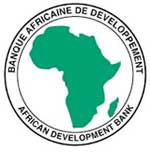Private investors smell profit in beefing-up the continent's over-stretched power grids and swarms of new wind turbines are soon expected to start going up.
If all plans on the table come to fruition, capacity will increase tenfold.
"When you look at the on-going and planned projects, you see actually over 50 percent of the projects being sponsored by the private sector," said African Development Bank economist Emelly Mutambatsere.
Today wind makes up one percent of electricity production, or just 1.1 gigawatts. But an additional 10.5 gigawatts is in the pipeline.
According to an African Development Bank study of 76 wind projects, two thirds are pending.
Liberalisation of electricity markets has helped prise open the sluice gates for investment.
"The state still plays a big role in a lot of the countries," Mutambatsere told AFP. "But a number of countries have liberalised to some extent."
North Africa - including Egypt, Tunisia and Morocco - have led the way. But sub-Saharan Africa is catching up.
Commercial wind farms
This year saw the first large commercial wind farm in the region come on line, a 52 megawatt project in Ethiopia. Further south, the continent's heaviest carbon emitter South Africa is a striking example of the sector's growth.
The coal-rich nation, gunning for an extra 18 gigawatts of capacity from renewables such as wind, has opened power production projects to private bidders for the first time. The first bidding round of 28 projects drew US$5bn in investments, according to the energy ministry.
"There's a huge boom going on in South Africa in wind and renewables," said South African Wind Energy Association's chief executive Johan van den Berg.
"South Africa previously had eight operative wind towers or turbines and there are now about 250 under construction," he said. "Last year, investment in South African renewable energy increased in excess of 20,000%," he added.
Meanwhile in Kenya the US$815m, 300 megawatt Lake Turkana Wind Power Project is hoping to break ground in November. With wind flow of 11.8m/s the project is "a dream" according to chairman Carlo van Wageningen.
According to Richard Doyle of renewable energy consulting firm 3E, tough conditions in key green markets like Europe have played a role in the pivot to Africa. So too, have the healthy returns promised in developing markets.
Many new investors
"There's been a veritable flood of companies moving from Europe into developing economies generally and Africa specifically," he said. However, he added that any "boom" tag had to be qualified by recognising conditions elsewhere.
"If markets were less tight in Europe, would as many developers be in Africa? Almost certainly not," he said.
And the Global Wind Energy Council secretary general Steve Sawyer says public financing will always play a role in smoothing out erratic investment flows. "However, there is growing understanding among governments that in order to create a sustainable energy system, a large degree of private investment is required," he added.
"That level of investment can only be achieved by creating the kind of policy environment which sufficiently reduces the risks to investors so that they are willing to finance a project," he said.
With just 0.1% of the 2011 renewable world market in Africa and the Middle East, the continent is still playing catch up.
Large-upfront costs mean wind power is a long way away from overtaking dirtier but cheaper energy sources like coal and gas. By 2030, wind is expected to account for just 2% of Africa's power mix, according to the International Energy Agency.
Coal is set to remain king at 37%, followed by gas at 32%.
"It won't become a dominant power source but it will become an important contributor to the energy mix," said the bank's Mutambatsere.
Source: AFP via I-Net Bridge





![By PMO - Ethiopia - [1], Public Domain,](https://biz-file.com/c/2509/787241-300x156.jpg?5)

























